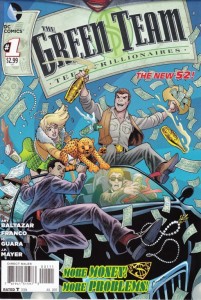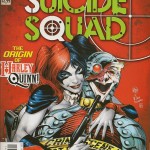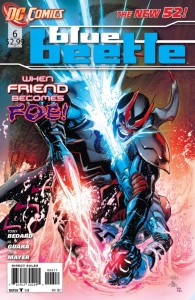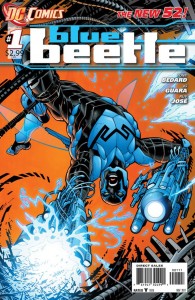 The Green Team is one of those comic book superhero teams that is destined to become part of comic book history. By which I mean, in about 20 years, some hotshot, big idea comics writer like Neil Gaiman was in the 90s will ressurrect them and try to treat them seriously as an archetype of a particular type of comic, written by middle-aged adults about adolescents, trying to capture the zeitgeist of a particular period of history. And that purely theoretical comic book writer of 2028 or 2033 will be heralded as a genius for finding a way to take The Green Team seriously, the way that Gaiman was when he wrote Prez into Sandman #54 20 years ago.
The Green Team is one of those comic book superhero teams that is destined to become part of comic book history. By which I mean, in about 20 years, some hotshot, big idea comics writer like Neil Gaiman was in the 90s will ressurrect them and try to treat them seriously as an archetype of a particular type of comic, written by middle-aged adults about adolescents, trying to capture the zeitgeist of a particular period of history. And that purely theoretical comic book writer of 2028 or 2033 will be heralded as a genius for finding a way to take The Green Team seriously, the way that Gaiman was when he wrote Prez into Sandman #54 20 years ago.
But that will happen in 15 or 20 years. Today, The Green Team feels very much the way Prez did back in 1973 (before my time, but I remember the series getting some play in DC Comics house reprint ads in the mid, late 70s, maybe as a giant sized gallery reprint, and even at that age I thought the idea was ridiculous): an effort by someone too old to be part of youth culture, trying like mad to grab bits and pieces that they either do understand or that they’ve read about, to make a book to appeal to them… and ultimately feeling like its trying too hard and mising the mark.
And maybe that’s my problem; after all, I am old enough to remember Prez, which means that my only relationship to youth culture is related to the things I would do to Lindsey Lohan if I had a double-strength condom and an iron-clad fake name to give her. But the trials and travails of a bunch of rich kids with Twitter trying to prove themselves to daddies who want them to grow up to become bougouisie douchbags like themselves (mission accomplished!) somehow doesn’t land home with me.
Plus: we’ve already got an Iron Man, guys.



 Podcast RSS Feed
Podcast RSS Feed iTunes
iTunes Google Play
Google Play Stitcher
Stitcher TuneIn Radio
TuneIn Radio Android
Android Miro Media Player
Miro Media Player Comics Podcast Network
Comics Podcast Network